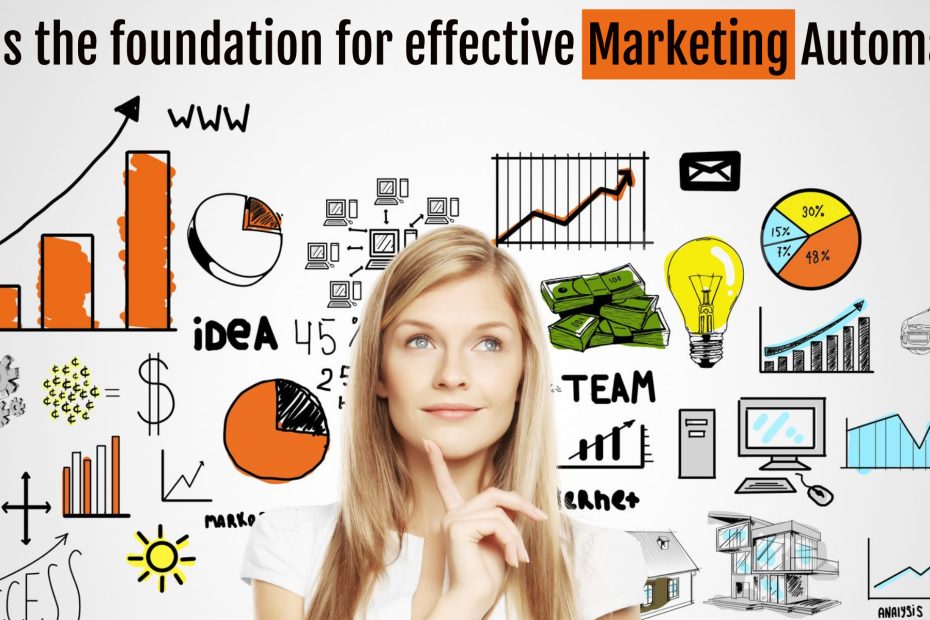What is the foundation for effective Marketing Automation?
Introduction:
Marketing automation has quickly become an indispensable asset in today’s business environment. Companies using marketing automation can leverage it to streamline marketing efforts and boost efficiency by automating repetitive tasks, personalizing customer messages, and optimizing engagement strategies – but for maximum benefit of marketing automation it requires a solid foundation. In this article, we will explore the key components that lay the groundwork for effective marketing automation and propel businesses towards success.
Understanding Marketing Automation:
Marketing automation refers to the use of technology and software to automate marketing tasks, workflows, and processes. It enables marketers to target the right audience with the right message at the right time, creating a seamless customer journey. However, before diving into the implementation of marketing automation, it is crucial to understand its fundamental principles.
1. Defining Objectives and Goals
To build a successful marketing automation strategy, businesses must first define their objectives and goals. What do they aim to achieve with automation? Is it lead generation, increased sales, improved customer retention, or all of the above? Having clear and specific goals will help shape the entire automation process.
2. Know Your Audience
Effective marketing automation is built on a deep understanding of the target audience. Utilize data analytics and customer insights to create detailed buyer personas. By knowing your audience’s preferences, pain points, and behavior, you can personalize your marketing messages to resonate with them on a deeper level.
Choosing the Right Marketing Automation Software:
Selecting the appropriate marketing automation software is a crucial decision that can significantly impact your automation efforts. Here are the key factors to consider:
1. Features and Functionality
Evaluate different marketing automation platforms to determine if they offer the features and functionality that align with your business needs. Look for features such as email marketing automation, lead scoring, CRM integration, and analytics capabilities.
2.Scalability and Flexibility
As your business grows, so will your marketing automation requirements. Ensure the software you choose can scale with your business and accommodate changing needs. Flexibility is vital to adapt to new marketing trends and technologies.
3. User-Friendly Interface
A user-friendly interface is essential for successful marketing automation implementation. Your team needs to be comfortable using the software and leveraging its capabilities without facing unnecessary complexities.
Data and Integration
Data is the backbone of marketing automation. It empowers businesses to make data-driven decisions and deliver personalized experiences to customers. Integrating your marketing automation software with other tools like CRM systems is vital for a unified view of customer interactions.
1. Data Collection and Management
Implement strategies to collect relevant data from various touchpoints throughout the customer journey. Properly manage and segment this data to tailor marketing campaigns for specific audience segments.
2. Integration with CRM
Integrate your marketing automation platform with your Customer Relationship Management (CRM) system to ensure a seamless flow of data between marketing and sales teams. This alignment enhances lead nurturing and conversion processes.
Creating Automated Workflows
Automated workflows are the heart of marketing automation. These predefined sequences of actions based on triggers help in nurturing leads and guiding them through the sales funnel.
1. Mapping the Customer Journey
Map out the customer journey and identify critical touchpoints where automated interactions can be triggered. This could include welcome emails, abandoned cart reminders, or personalized recommendations based on past behavior.
2. Lead Scoring and Nurturing
Implement lead scoring mechanisms to identify and prioritize high-quality leads. Use automated workflows to nurture leads with relevant content, ultimately guiding them towards a purchase decision.
Personalization and Content Strategy
One of the primary advantages of marketing automation is the ability to deliver personalized content at scale.
1. Segmentation for Personalization
Segment your audience based on various factors such as demographics, behavior, or engagement level. Craft tailored messages for each segment to enhance relevance and engagement.
2. Dynamic Content
Use dynamic content in your emails and landing pages to automatically display personalized information to each recipient based on their preferences and interactions.
3. Content Automation
Automate the distribution of content through various channels like email, social media, or website notifications. Ensure that the right content reaches the right audience at the right time.
Conclusion:
The foundation for effective marketing automation lies in understanding your audience, selecting the right tools, leveraging data, and creating personalized experiences. By aligning technology and strategy, businesses can enhance their marketing efforts, drive business growth, and foster stronger relationships with customers. Embracing marketing automation as a fundamental pillar of your marketing strategy will undoubtedly lead to increased efficiency, higher ROI, and long-term success.





